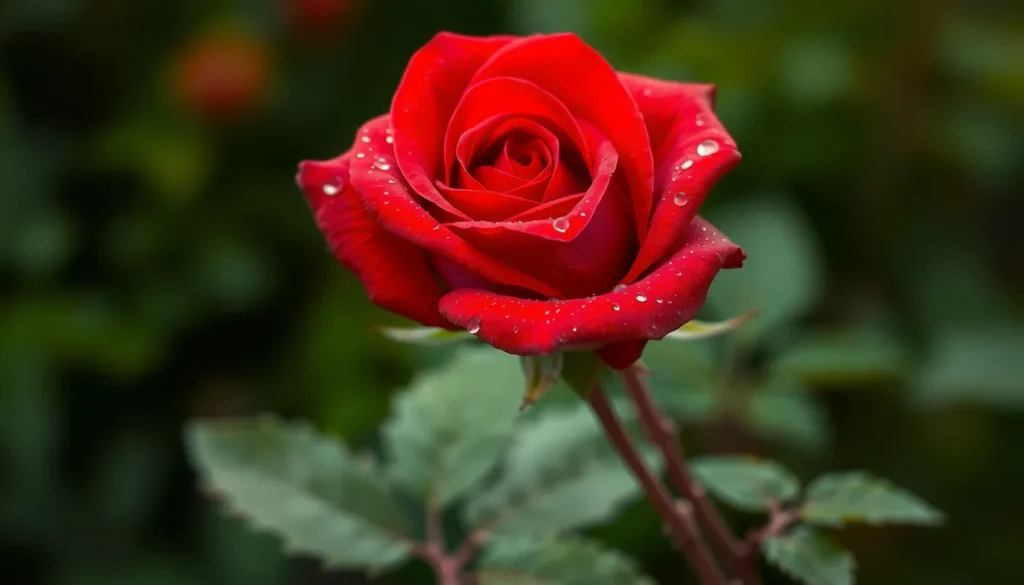Plants have whispered their secrets to humanity for thousands of years. We’ve woven intricate stories around every leaf and petal turning ordinary flora into powerful symbols that transcend cultures and generations. From the passionate red rose that speaks of love to the resilient bamboo that represents strength and flexibility these green messengers carry meanings far beyond their biological purpose.
Throughout history we’ve assigned profound significance to the plant kingdom. Ancient civilizations believed certain flowers could ward off evil spirits while others invited prosperity and good fortune. Today we still honor these age-old traditions whether we’re choosing wedding bouquets or selecting houseplants for our homes.
Understanding plant symbolism opens up a intriguing area where nature becomes our universal language. We’ll explore how different cultures interpret botanical meanings and discover why certain plants have maintained their symbolic power across centuries of human civilization.
Ancient Symbolism Behind Popular Houseplants and Their Meanings
Ancient civilizations recognized the spiritual energy within common houseplants long before we decorated our modern homes with them. These botanical companions carry centuries of symbolic meaning that continues to influence our plant choices today.
Peace Lily: Tranquility and Rebirth
Peace lilies represent spiritual purification and emotional healing in many ancient traditions. Buddhist monks cultivated these elegant white blooms in temple gardens to symbolize the soul’s journey toward enlightenment. We find their pristine petals emerging from dark green foliage particularly meaningful as they mirror the cycle of death and renewal that governs all life.
Ancient Greek cultures associated white flowers with Hera, the goddess of marriage and family harmony. Victorian flower language assigned peace lilies the exact meaning of “rebirth of the soul” after periods of grief or hardship. Modern spiritual practitioners still place these plants in meditation spaces to promote inner calm and mental clarity.
Their ability to bloom repeatedly throughout the year reinforced ancient beliefs about continuous spiritual growth. Egyptian tomb paintings often featured similar white blooms to guide souls through their afterlife journey. We appreciate how these plants literally clean our indoor air while symbolically purifying our living spaces.
Snake Plant: Protection and Good Fortune
Snake plants served as powerful protective talismans in West African spiritual traditions for over 1,000 years. Nigerian folklore credits these tall, sword-like leaves with the ability to cut through negative energy and shield homes from evil spirits. We see their upright growth pattern as nature’s way of creating spiritual barriers against unwanted influences.
Ancient Chinese feng shui masters positioned snake plants near doorways to prevent bad luck from entering homes. Their resilient nature and ability to survive neglect made them symbols of persistence and strength in adversity. Korean shamans used similar plants in cleansing rituals to remove spiritual blockages from their clients.
Brazilian indigenous tribes believed snake plants could communicate with ancestral spirits through their distinctive yellow-edged leaves. We find it fascinating that NASA research confirms these plants actively remove toxins from our air, validating ancient beliefs about their protective properties. Their capacity to produce oxygen at night made them sacred guardians in many cultures that valued the connection between breath and life force.
Rubber Tree: Abundance and Wealth
Rubber trees symbolized prosperity and financial growth throughout Southeast Asian cultures for centuries. Hindu traditions considered their broad, glossy leaves natural magnets for attracting material abundance into households. We notice how their rapid growth and ability to multiply through propagation perfectly embodied ancient concepts of expanding wealth.
Buddhist merchants carried rubber tree cuttings on trading expeditions to ensure profitable business ventures. Their latex production represented the transformation of natural resources into valuable commodities in pre-industrial societies. Chinese feng shui practitioners still recommend placing rubber trees in the wealth corner of homes to activate financial energy.
Indian Ayurvedic texts described rubber trees as symbols of “growing prosperity” due to their impressive size potential and longevity. We understand why ancient cultures connected these plants with abundance when we observe their ability to thrive in various conditions while continuously producing new growth. Their thick, waxy leaves were seen as nature’s way of storing wealth energy for gradual release into surrounding environments.
Traditional Wedding Plants and Their Romantic Meanings
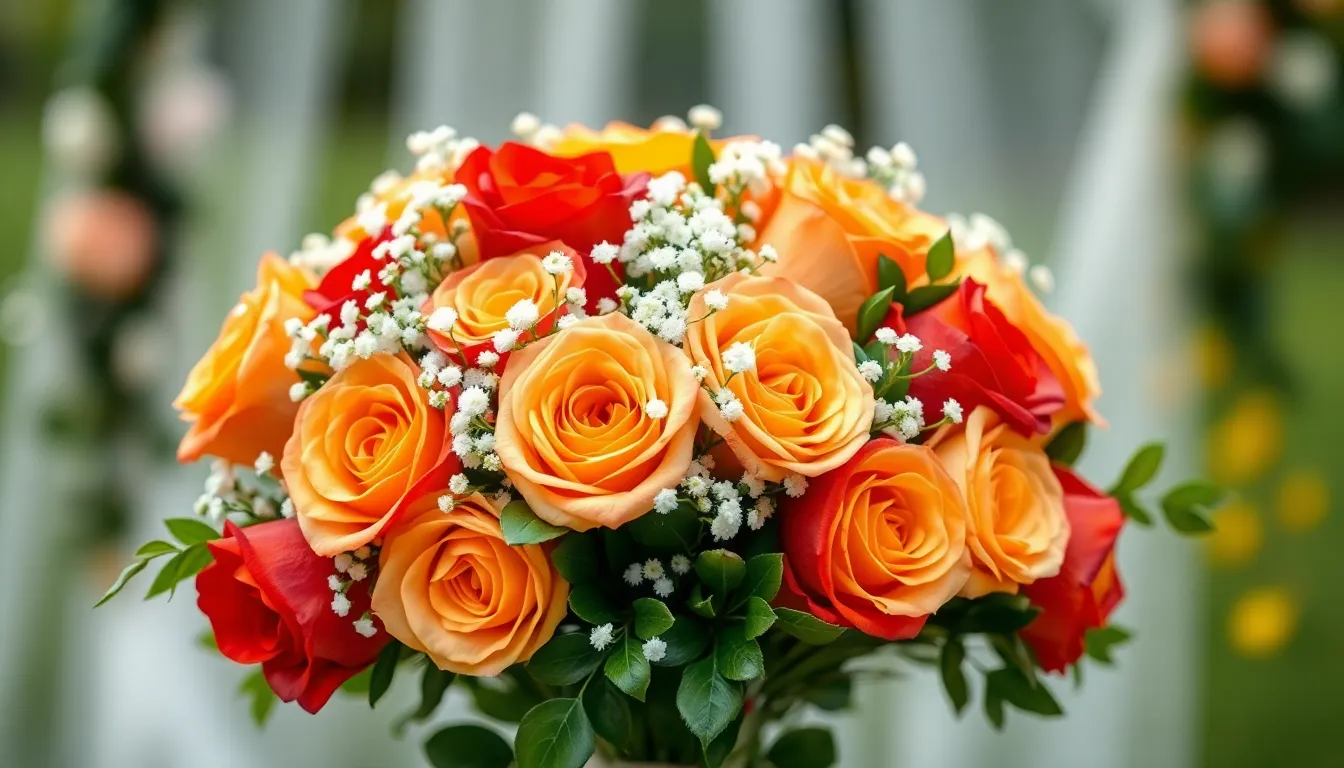
Wedding ceremonies have long celebrated the union of couples through carefully chosen botanical elements that carry deep romantic significance. These timeless floral traditions continue to shape modern wedding celebrations with their powerful symbolic meanings.
Rose: Passionate Love and Devotion
Roses reign supreme among wedding flowers, offering a spectrum of romantic meanings that vary dramatically by color. Red roses embody beauty, love, romance, and courage, making them the ultimate symbol of passionate devotion between partners. Red rosebuds specifically represent purity and beauty, while thornless red roses uniquely symbolize love at first sight.
Different rose colors convey distinct romantic messages for wedding celebrations. Orange roses express desire and fascination, perfect for couples who share an intense attraction. Peach roses communicate gratitude, ideal for honoring family members or expressing thankfulness for finding true love. Yellow roses signify joy and friendship, celebrating the foundation of companionship that strengthens romantic bonds.
| Rose Color | Romantic Meaning | Wedding Significance |
|---|---|---|
| Red | Beauty, love, romance, courage | True love and devotion |
| Red Buds | Purity and beauty | Innocent beginnings |
| Thornless Red | Love at first sight | Instant connection |
| Orange | Desire and fascination | Passionate attraction |
| Peach | Gratitude | Thankfulness in love |
| Yellow | Joy and friendship | Companionate love |
Baby’s Breath: Everlasting Love and Purity
Baby’s breath creates delicate clouds of tiny white flowers that symbolize everlasting love and purity in wedding arrangements. These miniature blooms represent the innocence and sincerity that form the foundation of lasting marriages. Wedding designers frequently use baby’s breath to complement larger statement flowers, creating romantic arrangements that convey enduring affection.
Pure white baby’s breath flowers embody the concept of eternal love that transcends time and circumstance. Couples often choose this flower to represent their commitment to maintaining pure intentions and genuine care throughout their marriage. Florists appreciate baby’s breath for its ability to soften bold arrangements while adding meaningful symbolism to wedding bouquets.
Ivy: Fidelity and Eternal Bonds
Ivy vines represent the strongest romantic commitments through their symbolism of fidelity, wedded love, and eternal friendship. These climbing plants naturally intertwine and grow stronger over time, perfectly mirroring the development of marriage bonds between devoted partners. Wedding planners incorporate ivy into ceremonies to emphasize the lasting nature of matrimonial vows.
Evergreen ivy maintains its vibrant appearance throughout all seasons, symbolizing love that endures through life’s challenges and changes. Ancient traditions recognized ivy’s ability to cling steadfastly to surfaces, making it a powerful metaphor for unwavering devotion between spouses. Modern couples select ivy for wedding decorations to represent their intention of growing together and supporting each other throughout their shared journey.
Ivy’s natural tendency to create strong bonds with its surroundings reflects the deep connections that develop between married partners over time. Wedding ceremonies featuring ivy elements celebrate the couple’s commitment to building unbreakable ties through affection, trust, and mutual support.
Sacred Plants and Their Spiritual Meanings Across Cultures
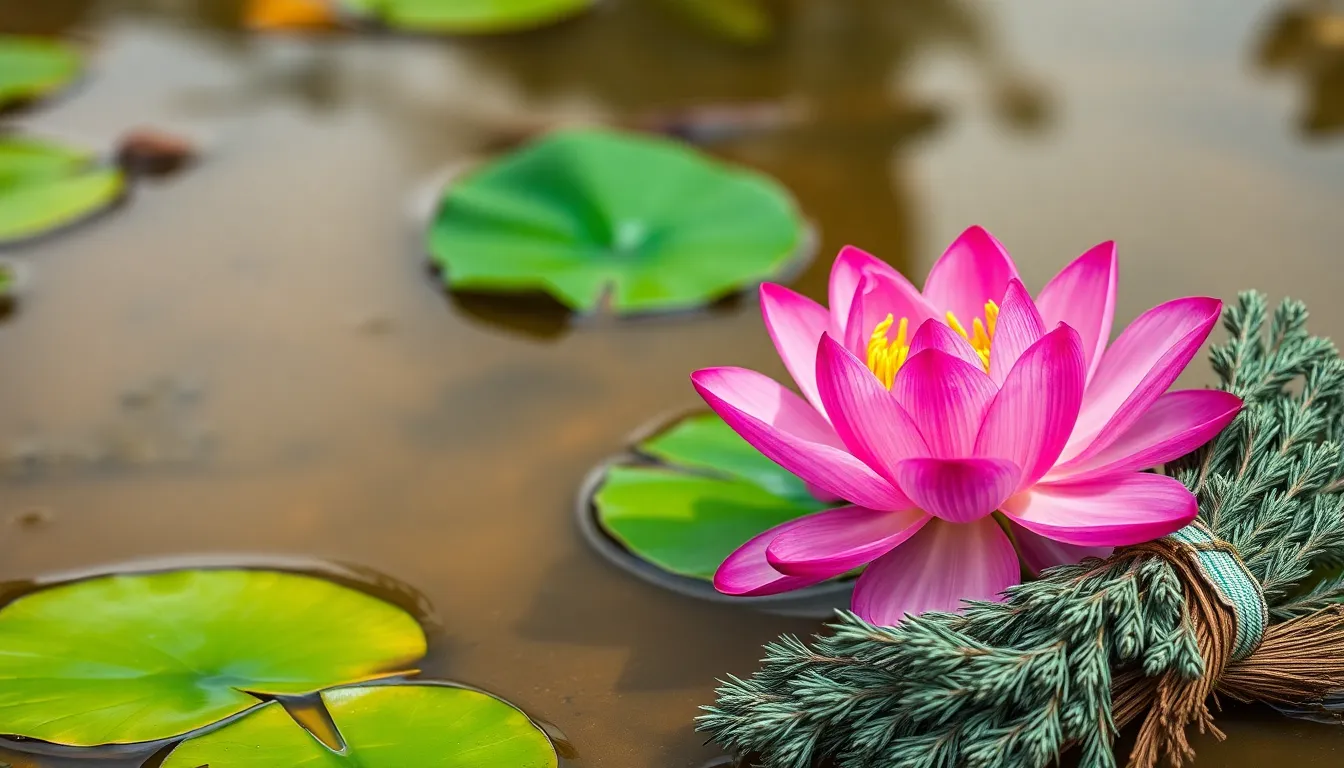
Sacred plants carry profound spiritual significance across diverse cultures, serving as bridges between the physical and divine realms. We’ll explore three powerful examples that demonstrate how certain flora transcends ordinary botanical purposes to become vessels of spiritual meaning.
Lotus: Enlightenment and Spiritual Awakening
Lotus flowers represent the ultimate symbol of spiritual transformation in Hinduism, Buddhism, and ancient Egyptian traditions. This remarkable plant grows from muddy waters yet emerges completely unstained, perfectly embodying the journey from darkness to enlightenment.
Within Hindu culture, we find the lotus deeply connected to divine deities like Lakshmi and Brahma, where it represents purity and divine creation. Buddhist traditions embrace the lotus as a powerful metaphor for enlightenment and the soul’s journey toward spiritual awakening.
Spiritual practitioners incorporate lotus flowers into their devotional practices by offering them in temples as acts of reverence. Meditation enthusiasts adopt the lotus pose (Padmasana) to channel the flower’s peaceful energy, while spiritual artists feature lotus imagery to foster inner peace and mental focus.
Sage: Wisdom and Cleansing
Sage holds tremendous importance in Native American and indigenous ceremonies for its remarkable cleansing and purifying properties. This sacred plant symbolizes wisdom and spiritual purification, making it an essential element in traditional spiritual practices.
Burning sage, known as “smudging,” serves to cleanse spaces, people, and objects from negative energy and spiritual impurities. Practitioners use this ancient technique to create sacred environments and remove unwanted spiritual influences from their surroundings.
Spiritual transformation becomes possible through sage’s assistance during ceremonies that honor the profound connection between spirit and environment. Communities rely on sage to bring clarity and balance to their sacred rituals, promoting positive change and spiritual growth.
Cedar: Strength and Healing
Cedar trees carry deep sacred significance among various indigenous cultures, particularly within Native American tribes like the Huu-ay-at and Salish peoples. These majestic trees symbolize strength, protection, and powerful healing properties that extend far beyond their physical presence.
Cultural traditions honor cedar for its supernatural powers and protective qualities against diseases and negative influences. Tribal healers use cedar bark and wood in healing rituals and ceremonies, believing these materials carry divine protection and restorative energy.
Spiritual meanings associated with cedar include providence, generosity, and guardianship of both the earth and its children. Some tribal traditions position cedar as the spirit of the West, representing maturity, harvest, and the wisdom that comes with life experience.
Funeral and Memorial Plants and Their Meanings of Remembrance
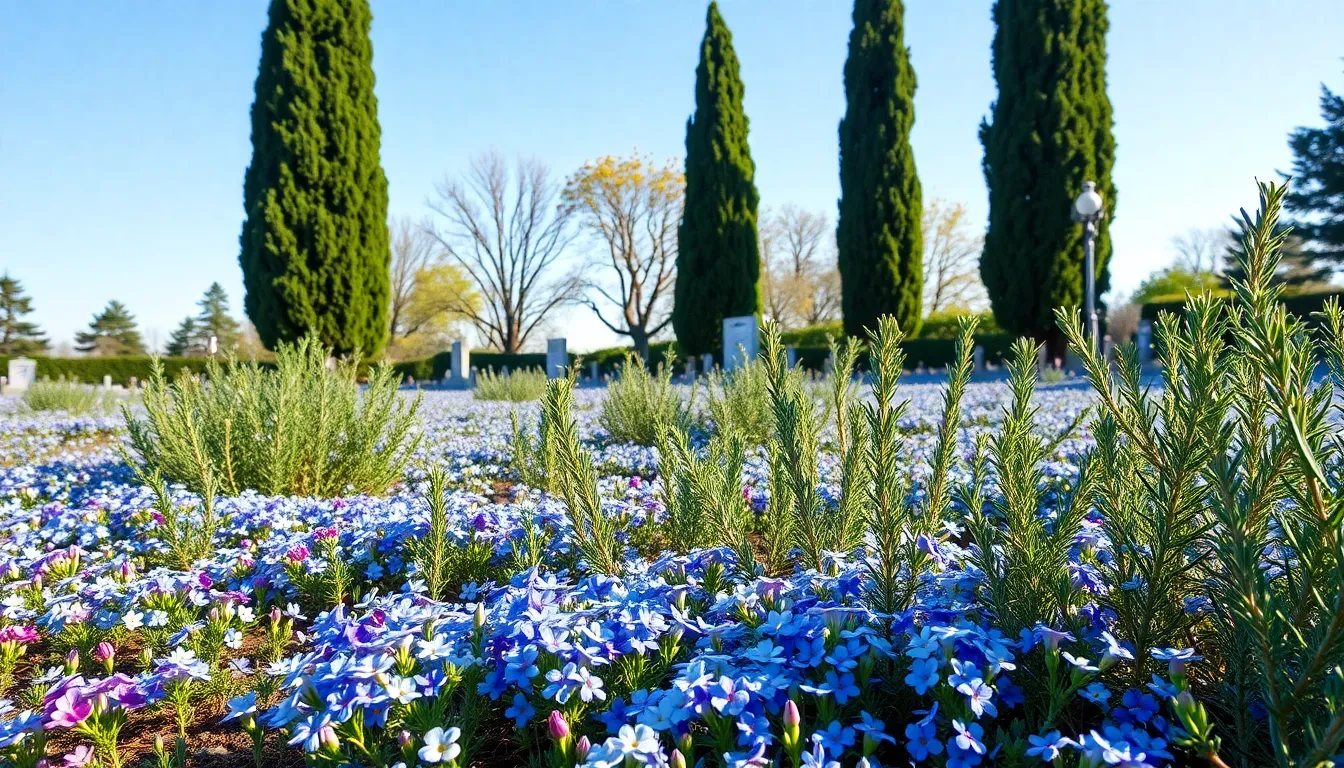
During life’s most solemn moments, we turn to plants that carry profound symbolic weight. Memorial plants help us express what words cannot convey.
Rosemary: Remembrance and Loyalty
Rosemary stands as nature’s most recognized symbol of remembrance and loyalty. This aromatic herb has graced funeral ceremonies for centuries, representing faithful remembrance of those who’ve passed away. Traditionally, mourners would carry sprigs of rosemary to honor the deceased’s memory and demonstrate their unwavering devotion.
We find rosemary particularly meaningful because its hardy nature mirrors the enduring bonds we share with loved ones. Ancient traditions often included placing rosemary on graves or incorporating it into memorial wreaths to symbolize that memories remain forever fresh. The herb’s distinctive fragrance serves as a sensory reminder of our commitment to keep precious memories alive.
Forget-Me-Not: True Love and Memories
Forget-me-nots carry an unmistakable message in their very name. These delicate blue flowers represent true love and enduring memories that transcend death itself. We often see them chosen by families who want to convey that their departed loved one will always be remembered and cherished in their hearts.
The small, vibrant blooms create powerful visual reminders of life’s precious moments. Memorial gardens frequently feature forget-me-nots because they naturally spread and return each year, symbolizing how memories continue to bloom long after someone has passed. Their gentle appearance offers comfort while delivering a promise that love never truly dies.
Cypress: Mourning and Eternal Life
Cypress trees embody the dual nature of grief and hope that defines the mourning process. These majestic evergreens are closely associated with mourning rituals while simultaneously representing eternal life beyond death. We see cypress trees planted in cemeteries worldwide, serving as living monuments to those who’ve passed away.
Their towering presence creates sacred spaces for reflection and remembrance. The tree’s evergreen nature symbolizes the soul’s journey into everlasting life, offering comfort to grieving families. Mediterranean cultures have long considered cypress trees sacred, believing they guide souls to their eternal resting place while providing solace to those left behind.
Prosperity Plants and Their Meanings for Good Luck
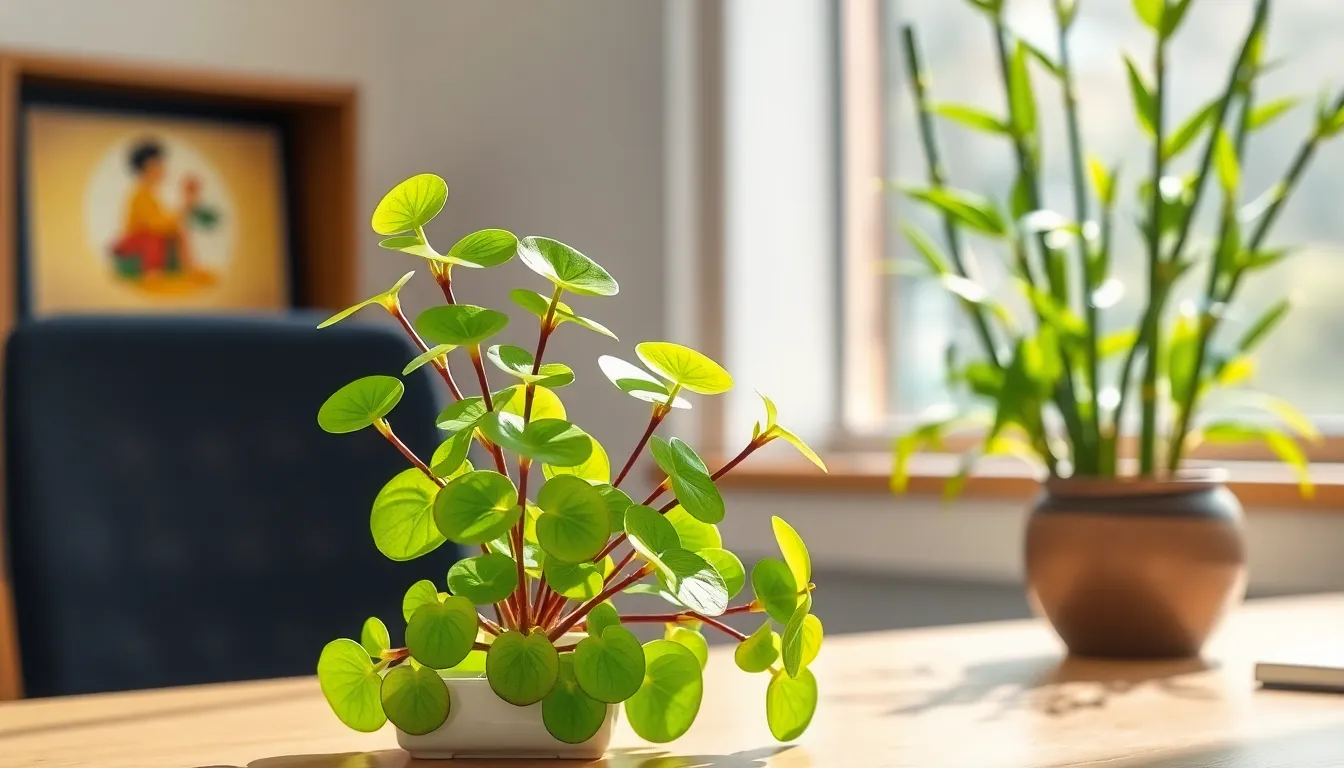
The ancient practice of using plants to attract wealth and fortune continues to flourish in our modern homes and offices. These prosperity plants carry powerful symbolic meanings that connect us to centuries-old traditions of abundance and success.
Jade Plant: Financial Success and Growth
Jade Plants earn their nickname as “Dollar Plants” through their distinctive coin-shaped leaves that naturally resemble money. We often recommend this succulent for those seeking to invite financial abundance into their living spaces because of its strong association with wealth accumulation and steady money flow.
Financial success becomes more attainable when we place these resilient plants in our homes or businesses, as their round leaves symbolize the continuous cycle of prosperity. Growth patterns in jade plants mirror the gradual building of wealth, making them perfect representations of long-term financial planning and patience.
Business owners frequently choose jade plants for their offices because these hardy succulents represent the steady, reliable growth that successful enterprises require. Success stories from various cultures consistently link jade plants to improved financial circumstances and enhanced money-making opportunities.
Bamboo: Fortune and Resilience
Bamboo plants bring centuries of Chinese wisdom into our homes through their powerful symbolism of fortune and unwavering strength. We’ve discovered that Lucky Bamboo arrangements carry exact meanings based on the number of stalks we choose to display.
Fortune multiplies when we arrange bamboo stalks thoughtfully: two stalks represent love, three bring happiness, five create balance, while eight or nine stalks specifically attract prosperity and wealth. Resilience shines through bamboo’s ability to bend without breaking, teaching us valuable lessons about adapting to financial challenges while maintaining our core strength.
Positive energy flows naturally around bamboo plants because they thrive in various light conditions and require minimal care, making them accessible prosperity symbols for busy lifestyles. Cultural traditions spanning thousands of years consistently recognize bamboo as a bringer of blessings related to health, wealth, and happiness.
Money Tree: Wealth and Positive Energy
Money Trees stand as powerful Feng Shui symbols that actively attract financial fortune and success into our environments. We particularly appreciate their distinctive braided trunks and lush green leaves, which create visual representations of intertwined prosperity and abundance.
Wealth manifestation becomes more focused when we strategically place these trees in our homes or offices, as their presence is believed to enhance the flow of positive financial energy. Positive energy radiates from Money Trees through their vibrant foliage and sturdy structure, creating an atmosphere conducive to business success and monetary growth.
Office environments benefit significantly from Money Tree placement because these plants symbolize the strong foundation necessary for building lasting wealth. Success in financial endeavors often correlates with the care we give our Money Trees, as nurturing these plants reflects our commitment to cultivating prosperity in all areas of life.
Healing Plants and Their Meanings in Traditional Medicine
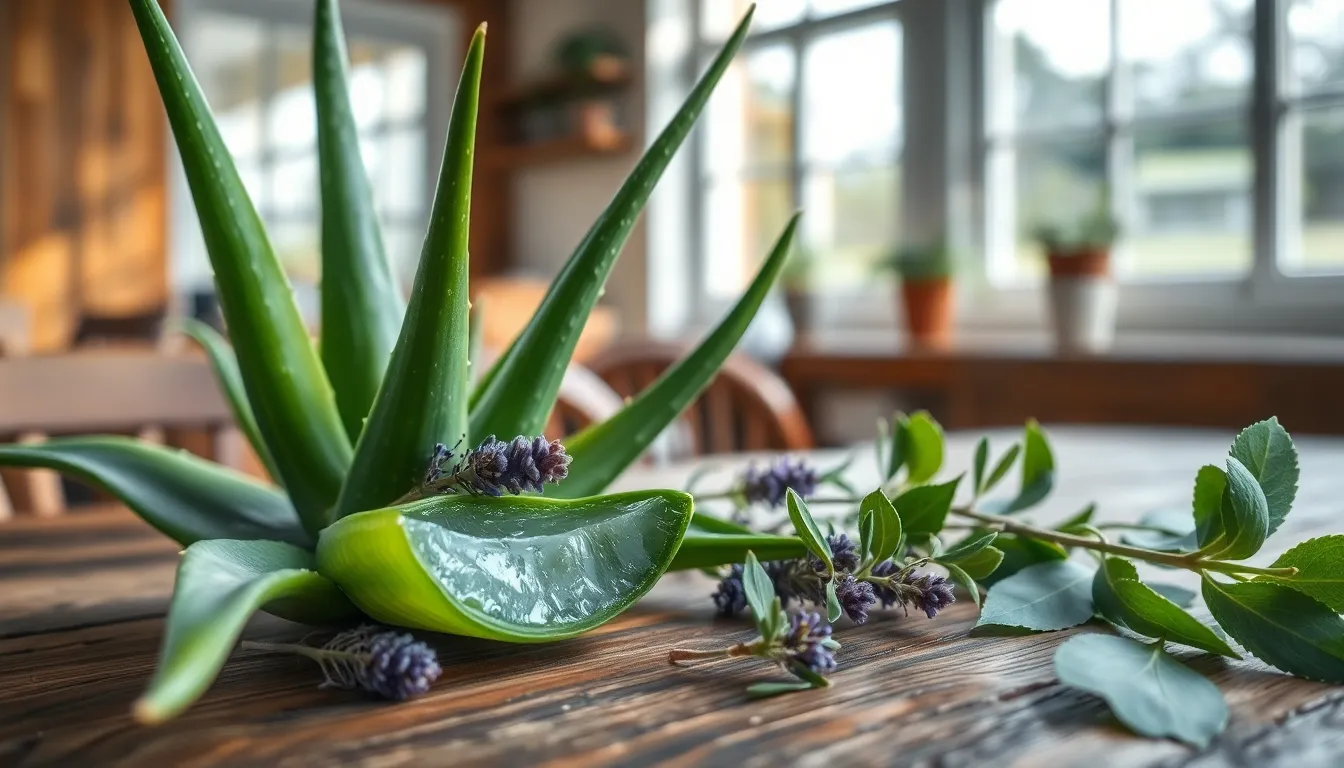
Traditional medicine systems have relied on exact plants for centuries, combining their therapeutic properties with deep symbolic meanings. We’ll explore three powerful healing plants that continue to hold important meaning in both medical and spiritual contexts.
Aloe Vera: Healing and Protection
Aloe vera stands as nature’s ultimate protector and healer in traditional medicine practices worldwide. This succulent plant’s gel contains compounds that soothe burns, cuts, and various skin ailments while symbolizing restoration and spiritual protection across multiple cultures.
Ancient Egyptians called aloe vera the “plant of immortality” because of its remarkable healing abilities. Healers have traditionally viewed this plant as a guardian that shields both physical and spiritual well-being. Traditional practitioners often recommend aloe vera not just for its medicinal gel but also for its protective energy that promotes cellular repair and emotional healing.
We see aloe vera’s dual nature reflected in how different cultures use it for both wound treatment and spiritual cleansing ceremonies. Its symbolism extends beyond physical healing to represent the body’s natural ability to restore itself when given proper care and protection.
Lavender: Calm and Serenity
Lavender embodies tranquility and mental peace in traditional healing systems around the industry. This fragrant herb has been used since prehistoric times to treat anxiety, insomnia, and emotional distress while symbolizing serenity and spiritual balance.
Traditional medicine recognizes lavender’s sedative properties that naturally calm the nervous system. Aromatherapy practitioners have long valued its ability to promote emotional equilibrium and reduce stress-related symptoms. Ancient Romans used lavender in their baths for purification, believing it could cleanse both body and mind.
We find lavender’s meaning deeply connected to its ability to create peaceful environments and promote restful sleep. Traditional healers often prescribed lavender to patients seeking relief from mental turmoil, viewing it as a plant that bridges the gap between physical symptoms and emotional healing.
Eucalyptus: Purification and Health
Eucalyptus represents purification and cleansing power in traditional medicine systems, particularly for respiratory health and spiritual cleansing. This aromatic tree’s leaves contain antiseptic compounds that clear airways and combat infections while symbolizing the removal of negative energy and illness.
Traditional healers have used eucalyptus to treat breathing difficulties and promote overall health since ancient times. Aboriginal Australians considered eucalyptus sacred, using it in healing ceremonies to purify spaces and people. The plant’s strong scent and medicinal properties made it a symbol of health and protection against disease.
We recognize eucalyptus as a plant that cleanses on multiple levels, from clearing congested lungs to purifying spiritual spaces. Traditional medicine systems value its ability to promote health through both physical treatment and energetic cleansing, making it a powerful symbol of renewal and vitality.
Seasonal Plants and Their Meanings Throughout the Year
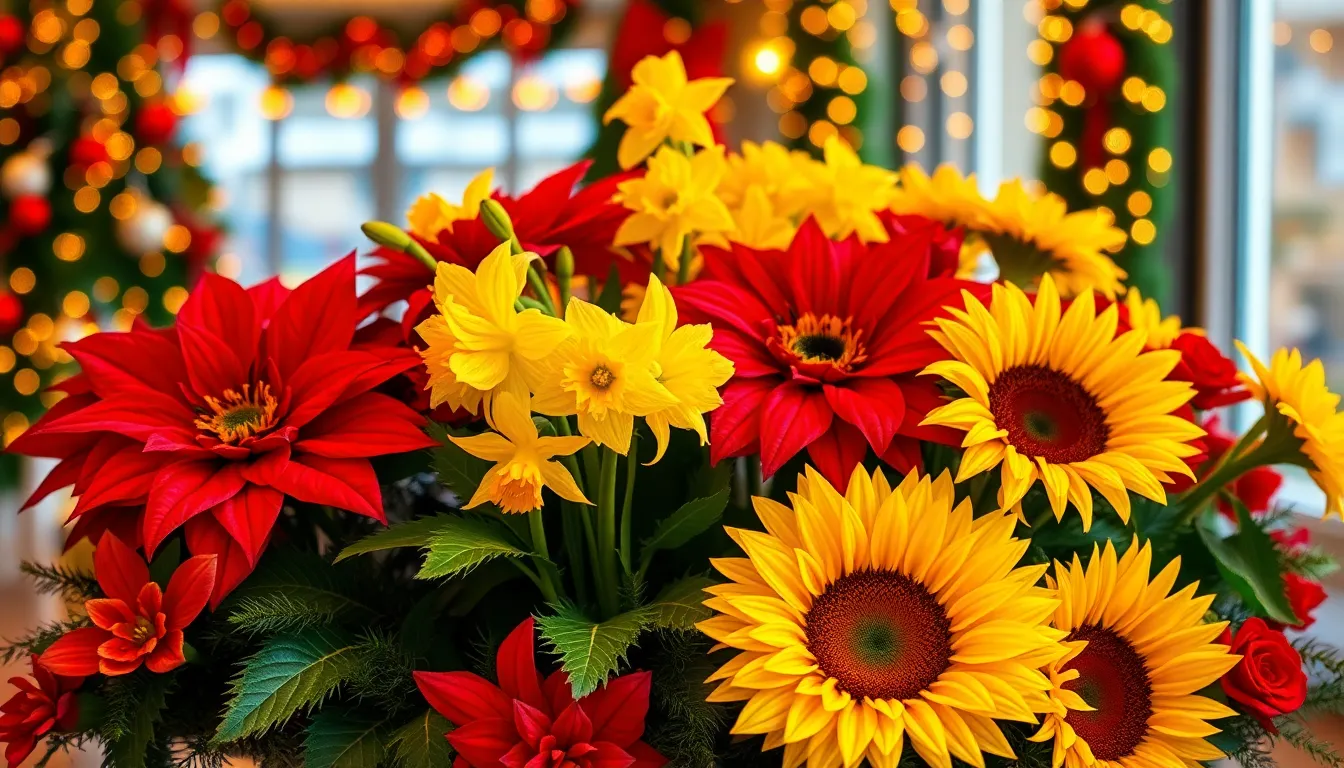
Nature’s calendar brings us different plants throughout the seasons, each carrying profound symbolic meanings that reflect the cyclical nature of life. We celebrate these seasonal messengers for their ability to capture the essence of different times of year through their symbolism.
Poinsettia: Joy and Success
Poinsettias transform our winter celebrations with their vibrant symbolism of joy, success, hope, peace, and rebirth. Originating from Mexico, where locals call it La Flor de Nochebuena (The Flower of Christmas Eve), this striking plant carries deep cultural and religious significance that spans centuries.
Mexican legend tells us the touching story of Pepita, a poor girl who offered simple roadside weeds to baby Jesus. Miraculously, these humble offerings transformed into brilliant red poinsettias, creating a powerful symbol of heartfelt devotion and divine intervention. This transformation story reinforces the plant’s connection to miracles and genuine offerings from the heart.
Christian symbolism adds layers of meaning to the poinsettia’s appearance. Red leaves represent Christ’s blood, white leaves symbolize purity and innocence, and the distinctive star-shaped leaf formation represents the Star of Bethlehem that guided the Wise Men. These religious interpretations make poinsettias deeply meaningful during Christmas celebrations.
Beyond religious contexts, poinsettias serve as emblems of good cheer, festive celebration, and success across cultures in the U.S., Mexico, and Europe. We see their popularity during holiday seasons as a testament to their ability to embody the joy and accomplishment we associate with year-end celebrations.
Daffodil: New Beginnings and Hope
Daffodils herald spring’s arrival with their powerful symbolism of new beginnings, hope, and renewal. Blooming in early spring, these cheerful flowers mark winter’s end and announce the start of a fresh growing season filled with possibilities.
Bright yellow petals convey optimism and promise growth and vitality after months of dormancy. We recognize daffodils as nature’s way of reminding us that even the darkest winters eventually give way to light and warmth. Their emergence from cold soil represents resilience and the triumph of life over adversity.
Gardeners and flower enthusiasts choose daffodils to symbolize fresh starts and new chapters in life. These spring messengers encourage us to embrace change and look forward to brighter days ahead, making them perfect symbols for seasonal transitions and personal transformations.
Sunflower: Loyalty and Adoration
Sunflowers embody loyalty, adoration, and warmth through their distinctive behavior and striking appearance. Their bright, large yellow petals follow the sun’s path throughout the day, creating a natural symbol of steadfastness and unwavering devotion.
This heliotropic movement has led cultures worldwide to associate sunflowers with faithfulness and dedication. We observe how these flowers literally turn their faces toward the light, representing our own desire to seek positivity and remain loyal to our values and relationships.
Floral language traditions recognize sunflowers as expressions of admiration and positive energy. Their impressive size and radiant color make them natural choices for conveying feelings of respect, appreciation, and wholehearted devotion. We often see sunflowers used to represent the kind of love that remains constant and bright, regardless of external circumstances.
Conclusion
The symbolic language of plants continues to enrich our lives in countless ways. Whether we’re selecting the perfect houseplant for our living room or choosing meaningful flowers for a special occasion these green companions carry messages that transcend words.
Understanding plant symbolism helps us create more intentional spaces and celebrations. From the prosperity-attracting jade plant on our desk to the remembrance rosemary in our memorial garden each choice becomes a deliberate act of connection with ancient wisdom.
As we nurture these botanical messengers we’re participating in a tradition that spans cultures and centuries. The meanings we’ve explored remind us that plants offer far more than beauty—they provide comfort healing and hope exactly when we need them most.
Frequently Asked Questions
What is the historical significance of plant symbolism across cultures?
Plant symbolism has deep historical roots across many cultures, with different flora representing various meanings and beliefs. Ancient civilizations attributed spiritual powers to plants, believing they could ward off evil or bring good fortune. These traditions continue to influence modern practices, from choosing wedding bouquets to selecting houseplants for specific meanings.
What does the Peace Lily symbolize in different cultures?
The Peace Lily represents tranquility, rebirth, and spiritual purification across various cultures. This elegant houseplant has been associated with spiritual cleansing and peaceful energy, making it a popular choice for those seeking harmony in their living spaces.
Why is the Snake Plant considered protective?
The Snake Plant is believed to have protective qualities and bring good fortune, rooted in West African and Chinese traditions. This hardy houseplant is thought to guard against negative energy while attracting positive vibes and prosperity to the home.
What makes the Rubber Tree a symbol of wealth?
In Southeast Asian cultures, the Rubber Tree symbolizes abundance and financial prosperity. It’s believed to attract wealth and good fortune, making it a popular choice for those looking to enhance their financial well-being through plant symbolism.
What do different colored roses mean in weddings?
Wedding roses carry distinct romantic messages based on their color: red symbolizes passionate love, orange represents desire, peach conveys gratitude, and yellow expresses joy. These meanings help couples choose roses that best represent their feelings and relationship.
Why is Baby’s Breath popular in wedding arrangements?
Baby’s Breath symbolizes everlasting love and purity, making it a meaningful addition to wedding ceremonies. This delicate flower complements larger blooms while representing the enduring nature of true love and the innocence of new beginnings.
What spiritual significance does the Lotus flower hold?
The Lotus symbolizes enlightenment and spiritual awakening in Hinduism, Buddhism, and ancient Egyptian traditions. It represents the journey from darkness to purity, making it one of the most revered spiritual symbols across cultures.
How is Sage used in spiritual practices?
Sage is valued for its cleansing and purifying properties, particularly in Native American ceremonies. It symbolizes wisdom and spiritual purification through practices like smudging, where the smoke is believed to clear negative energy and promote spiritual clarity.
What do Forget-me-nots represent in memorial contexts?
Forget-me-nots symbolize true love and enduring memories, making them popular choices for memorial gardens. These small blue flowers signify that loved ones will always be remembered and cherished, providing comfort to those grieving.
Why is the Jade Plant called the “Dollar Plant”?
The Jade Plant is known as the “Dollar Plant” because it symbolizes financial success and growth in many cultures. Its thick, coin-like leaves are believed to attract wealth and prosperity, making it a popular choice for those seeking financial abundance.
What healing properties are associated with Lavender?
Lavender symbolizes calm and serenity while offering therapeutic benefits for emotional balance. This fragrant herb is valued for its ability to promote relaxation, reduce stress, and create peaceful environments, combining physical healing with spiritual comfort.
What does the Sunflower represent symbolically?
Sunflowers embody loyalty and adoration through their heliotropic behavior of following the sun. They symbolize steadfastness, devotion, and unwavering faith, making them powerful symbols of dedicated love and commitment in relationships.

